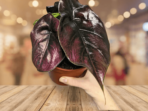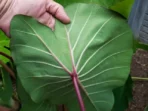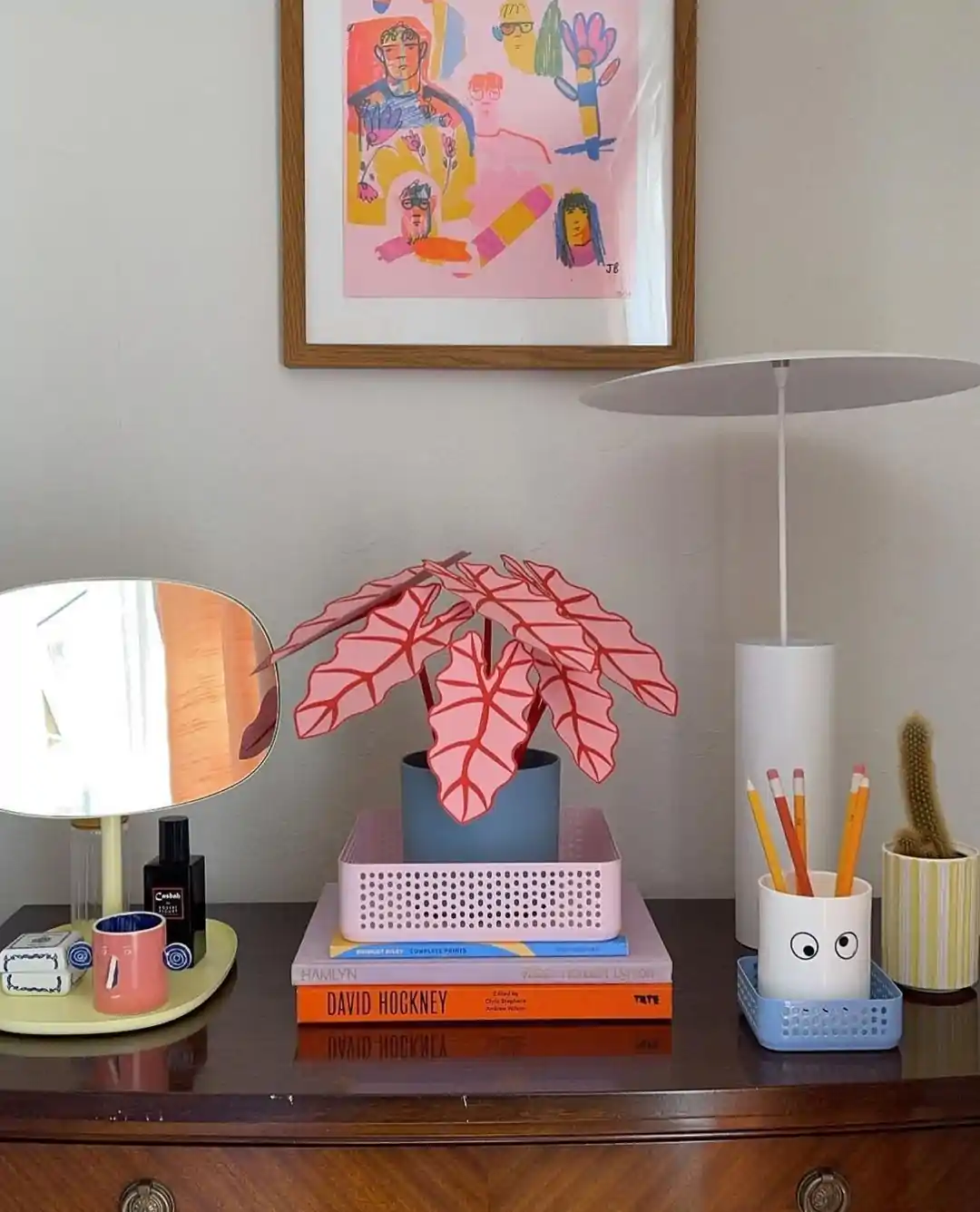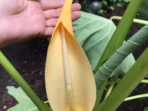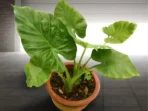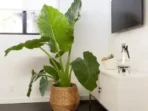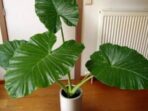Do you know that there is pink elephant ear plant variant that can really spark up your property? And the best thing about this plant is that it isn’t overly big, wide, or expansive, making it perfect as a pink elephant ear plant indoor. This is great when you want to have this wide and expansive leafy green inside your house. But if you are looking for a huge and big plant that grows tall, this one may not be suitable for you.
About the Pink Elephant Ear Variant
Just as the name suggests, the pink elephant ear plant has pinkies hue on its part. Depending on the variants, the pink shade can be found in various different parts. You need to remember that elephant ear comes in different types and variants, so don’t expect uniformed look and similarities from one another.
Colocasia Esculenta Pink China
This one is commonly known as Taro, coming as a part of Araceae family. The plant comes in a bulb form, thriving well in zone 6 to 10 for successful growth and development. This one may not be overly small, but it isn’t super wide or huge either. It is also one of the most popular pink elephant ear plant for sale because of the attractive appearance.
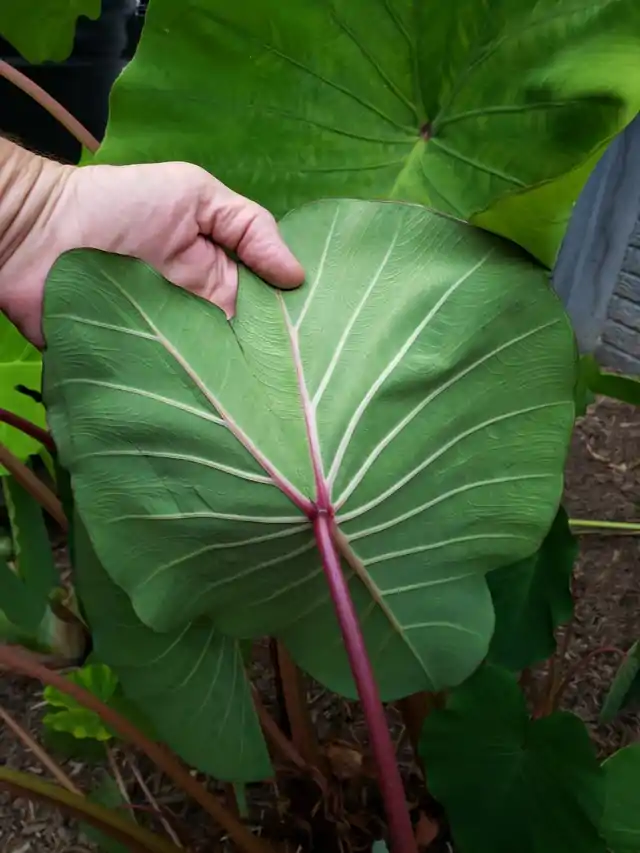
This plant would grow best in (organically) rich, humusy, and fertile soil. It grows perfectly well in medium soil to wet soil, making it perfect as water plant or water garden. Place the plant in the full sun up to partial shade to achieve the best growth. It is quite versatile; you can grow it indoor as well as outdoor. If you grow it outdoor, make sure that you water it regularly – at least the soil should have enough moisture and doesn’t go completely dry. During summer time, you may have to water it more often than the regular schedule. Make sure that the site of your plant is located in as safe place from strong winds.
This ‘Pink China’ is basically quite tolerant to cold. It has green leaves with heart shape that has (bright) pink red petioles or leaf stems. Mature plants can grow up to six feet tall, growing along the equal spread. The flowers are the typical aroid that aren’t showy, but with white spadix and spathe. This is a relatively easy plant to grow because it doesn’t have any particular disease or insect issue. This plant is great to deliver tropical atmosphere and vibe, especially when used in rain gardens, mixed borders, and also big containers. It can also be utilized as water plant. Whether you want to have it in groups or as a specimen, you can never go wrong with it.
Alocasia Pink Dragon
This plant looks almost the same as the Pink China, but with some distinctive differences. The plant has beautiful shade of pink with burgundy on the underside (of the leaves). It also has glossy and dark green leaves, complete with the deep veins resembling the dragon scale; thus, the pink elephant ear plant name. This is an utterly gorgeous plant that can also function as an ornamental piece.
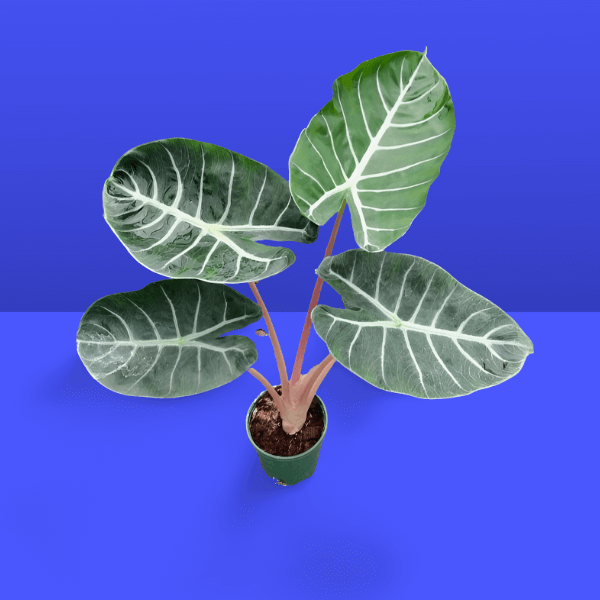
Unlike the Pink China that loves direct and bright sunlight, the Pink Dragon prefers bright but filtered light. It prefers bright light that is away from the sun. If you expose it too much (to the sun), the leaves would suffer from sunburnt. The leaves would also look dull if exposed too much to the light. This plant likes humidity, often found in tropical environment close to water. When compared to the Pink China, this Pink Dragon is great as a indoor plant. A lot of people would use it as a house-warming gift, with cute pot and personalized handwritten card.
If you don’t have any experience caring for any plant, this pink elephant ear plant type would be a perfect option for you. It’s easy to care and it doesn’t involve any fussy management either. Just be sure that you have access to good light (enough, but not too much) and you know how to deal with the watering. It shouldn’t be over-water or underwater. Be advised that this plant is toxic, so you need to be careful about the placement if you have pets or kids. It can grow up to 45 centimeters in height and 12 centimeters in width. As you can see, it’s not overly big, which makes it perfect as potting plants.
Alocasia Azlanii
This is another pink elephant ear plant type with unique color. It is considered the rare Alocasia type that isn’t always available anywhere. This plant would survive and grow well in moderate temperature, between 59 degrees Fahrenheit to 86 degrees (or around 15 to 30 degrees Celsius). This one loves humidity so much, requiring at least 60% level of humidity. The plant isn’t exactly difficult to maintain, but the most common issues involve underwatering and not enough humidity. If you decide to keep this plant, you need to make sure that the soil remains damp ad moist. Never let it completely dry.
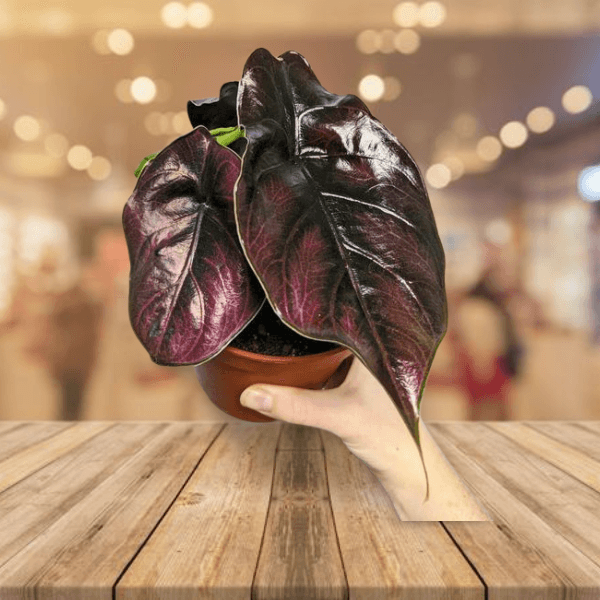
This plant isn’t exactly pinkish in hue, per se. the plant has dark and waxy green leaves with purplish veins. From a far, the purple can look pinkish because of the dark intensity. As a houseplant, it is truly stunning, and you can have it in pots. Place the pot in bright, but indirect light, to ensure proper growth. You need to check the plant, especially during summer or hotter months. Touch the soil. If it is still wet or damp, leave it. But if has reached a point of being almost dry (or dry-ish) then provide enough water. Remember, underwatering is as bad as overwatering, so don’t overdo it. This Alocasia Azlanii would generate bulbs after it has reached a year. When you plant the bulbs, you need to wait for around 4 weeks to 8 weeks to grow. You need to be patient when dealing with this plant, but the overall care and maintenance isn’t difficult, so you should get the hang of it.
As you can see, there are different pink variants for the elephant ear plant. Be sure to know the variant you like, so you can have the pink elephant ear plant that you like the most.
Read: Knowing the Best Time of When to Plant Elephant Ears Plant

